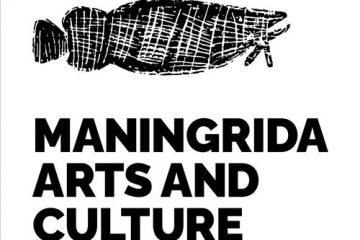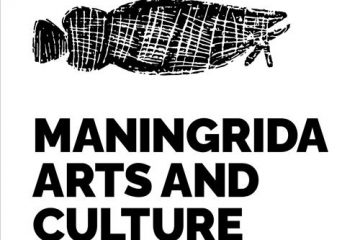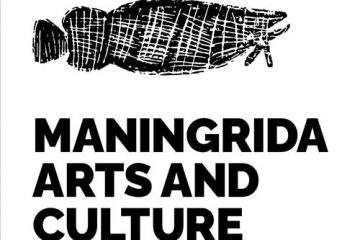111982210789
Lunggurrma body designs
There are clan body designs belonging to Ganalbingu and Djarrawitjibi clans used in the Marayarr Murrukundja ceremony. This ceremony is a public ceremony of diplomacy, a variety of the Marrajiri or Rom ceremony used by one language group as a presentation or gift to another group to maintain and strengthen economic, kinship and social ties between the groups. In the Marayarr murrukundja ceremony, the dancers present a large pole over three metres tall decorated with string, feathers and cloth to their hosts. The pole represents the mast of a Macassan prau rolling in rough seas as the dancers tug rope attached to the to of the pole whilst dancing and singing.
This particular design represents the artist’s personal clan totem lunggurrma the Northern wind which brought the Macassan trepangers to the shores of Arnhem Land in the artist’s clan estate. Lunggurrma is also the name of the high cirrus clouds, which run in a straight line across the sky.
The memory of the annual visits of the Macassan to Northern Australia has been enshrined in Aboriginal ceremony, language, song and oral history. Aboriginal people in Arnhem Land came to strongly associate the wet season with the arrival of the Macassans.
This particular design is only worn by men of Ganalbingu or Djarrawitjibi clans for public diplomacy ceremonies and by boys of the above clans during their circumcision which when painted on the body runs from the shoulder down to the middle of the thigh. Bulunbulun also says that this is how the cirrus clouds appear in the sky “but like lunggurrma he goes up and down when you see cloud, it goes different way”. Songs in the Marayarr ceremony have lunggurrma as their theme.


